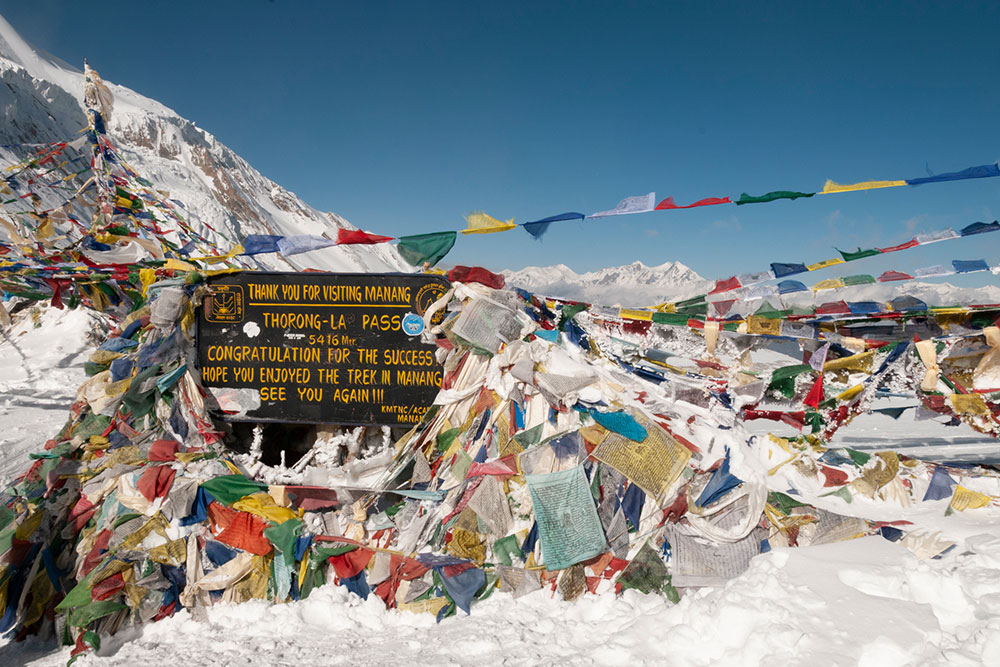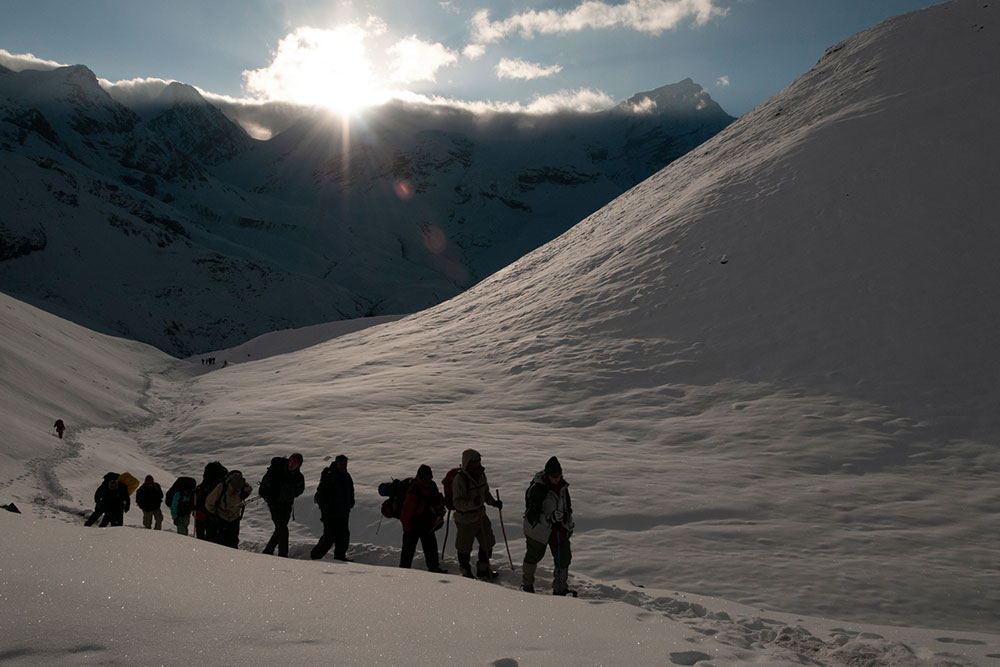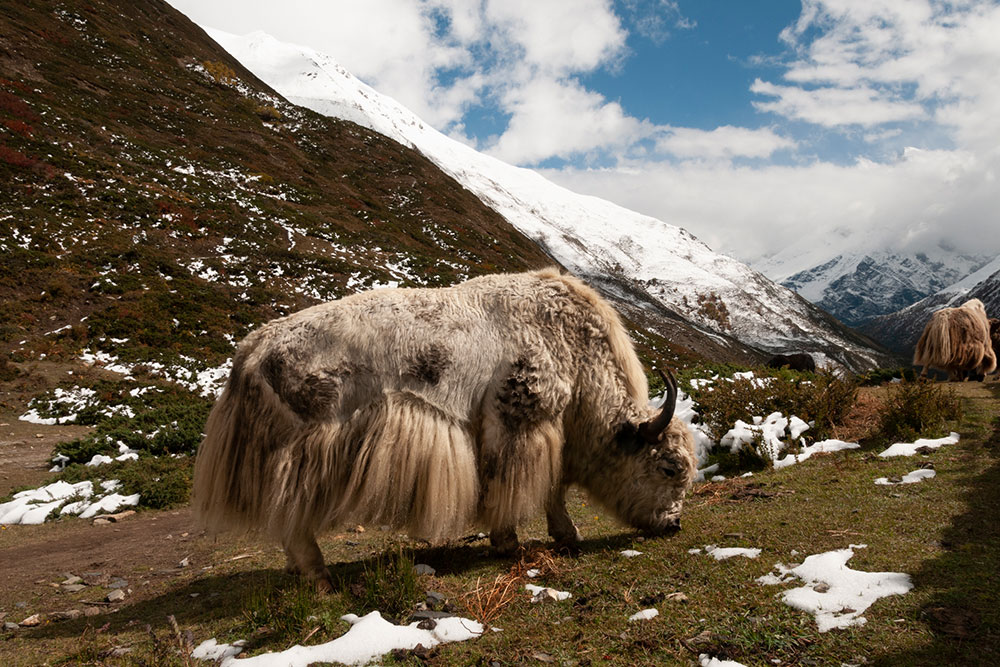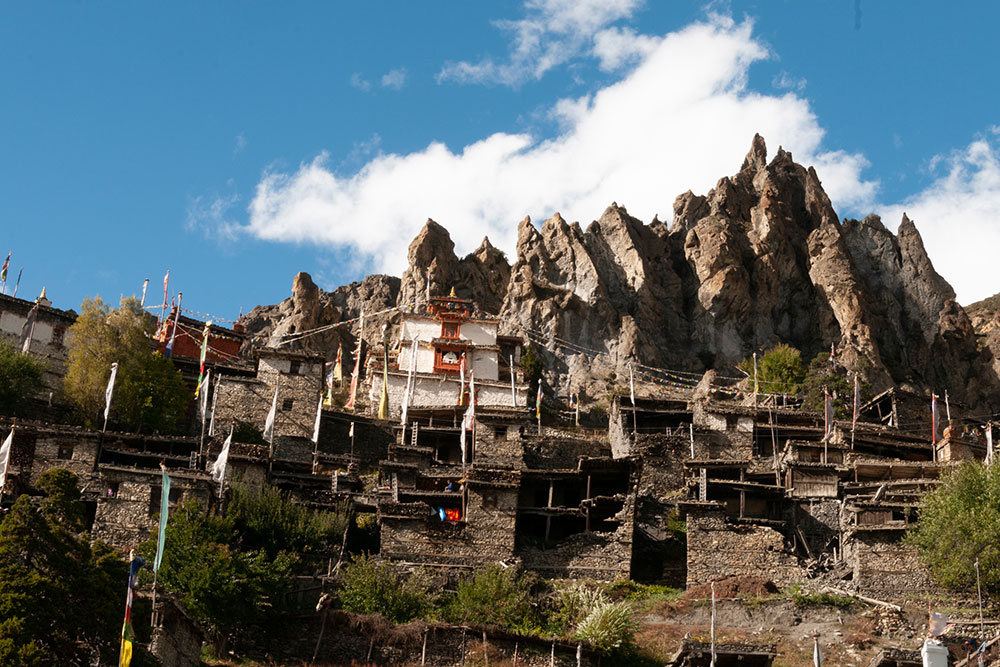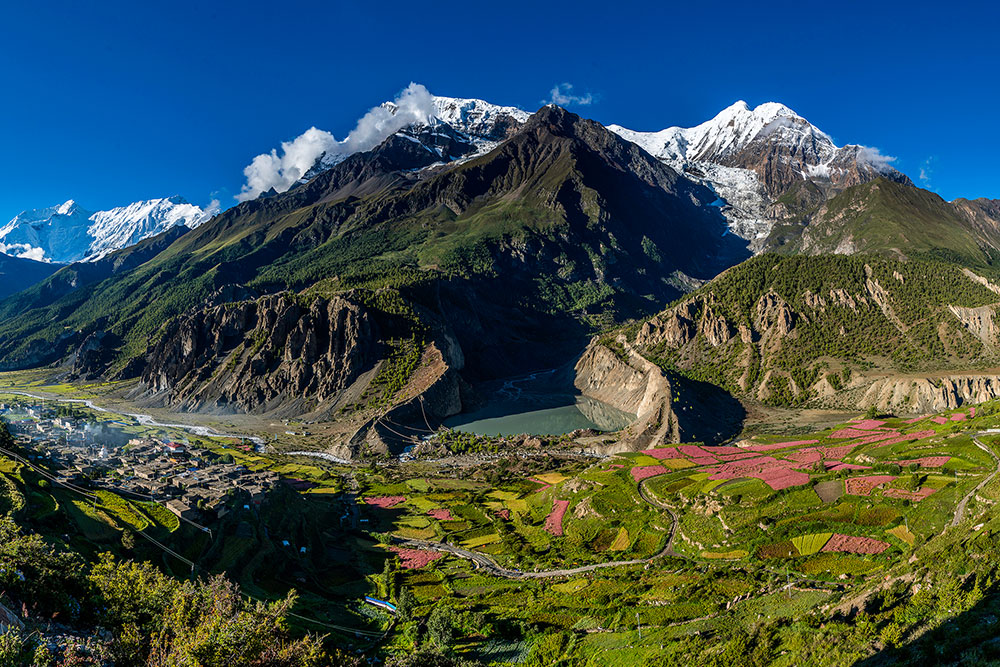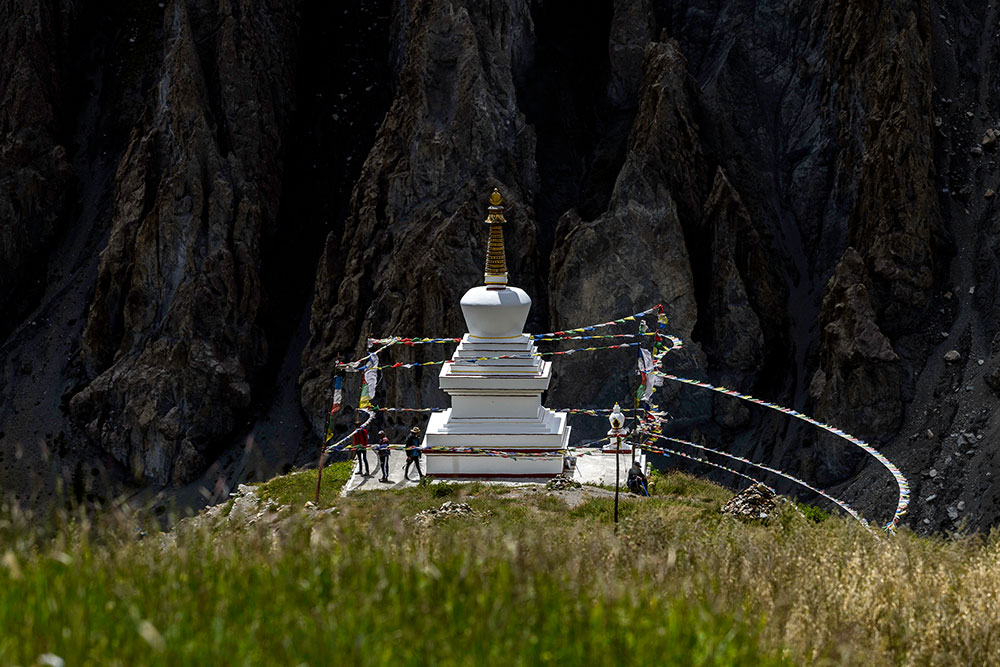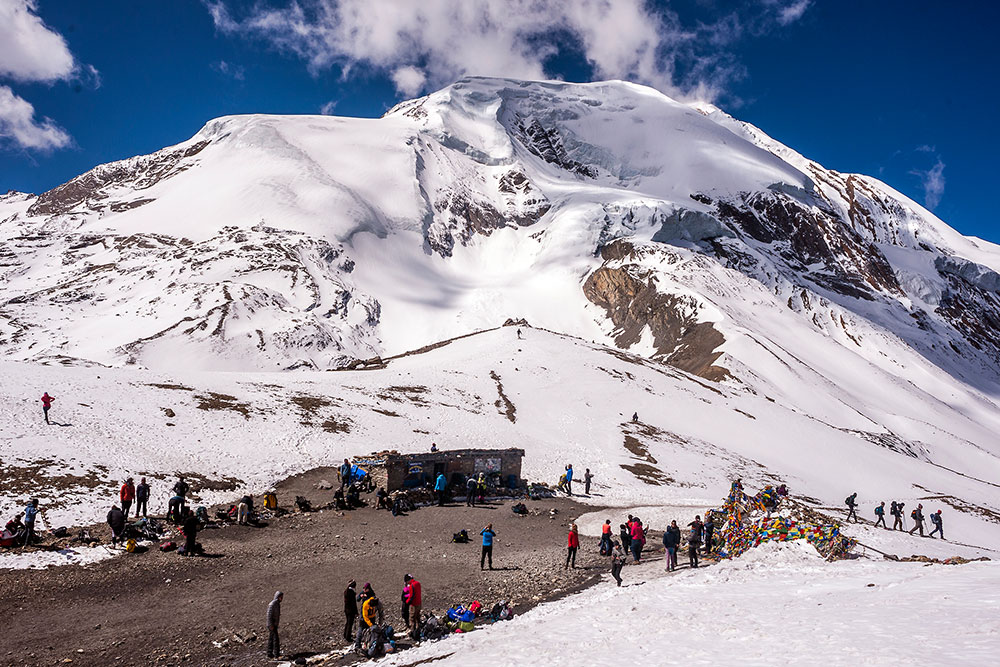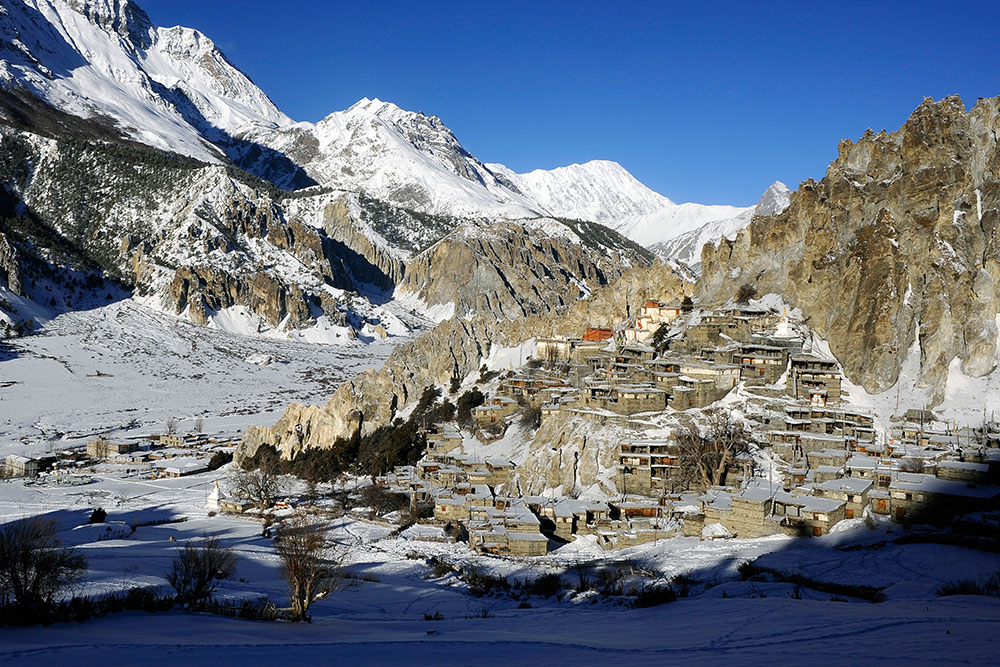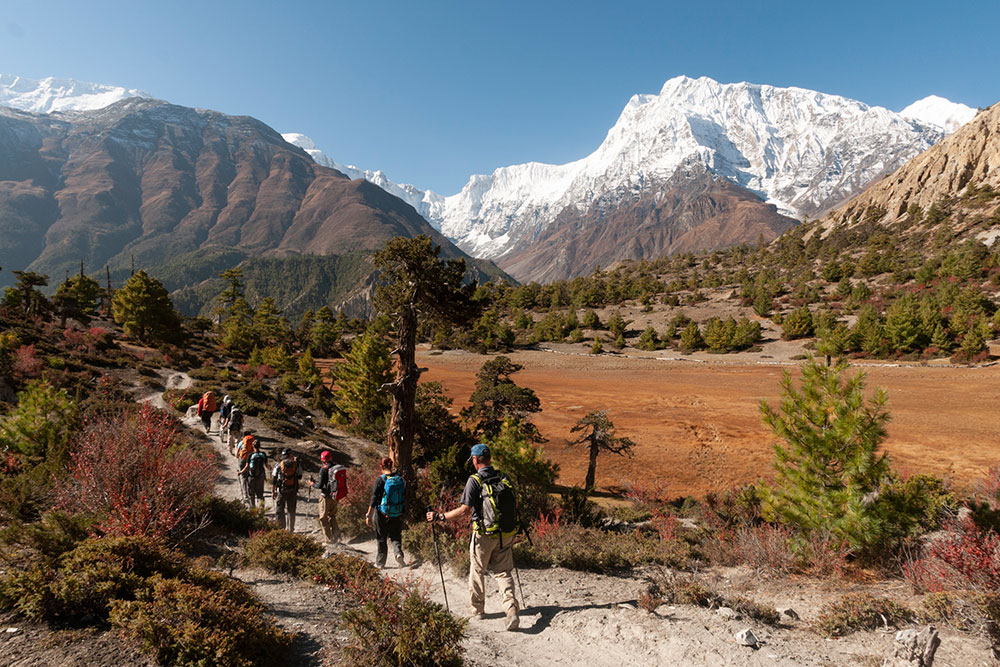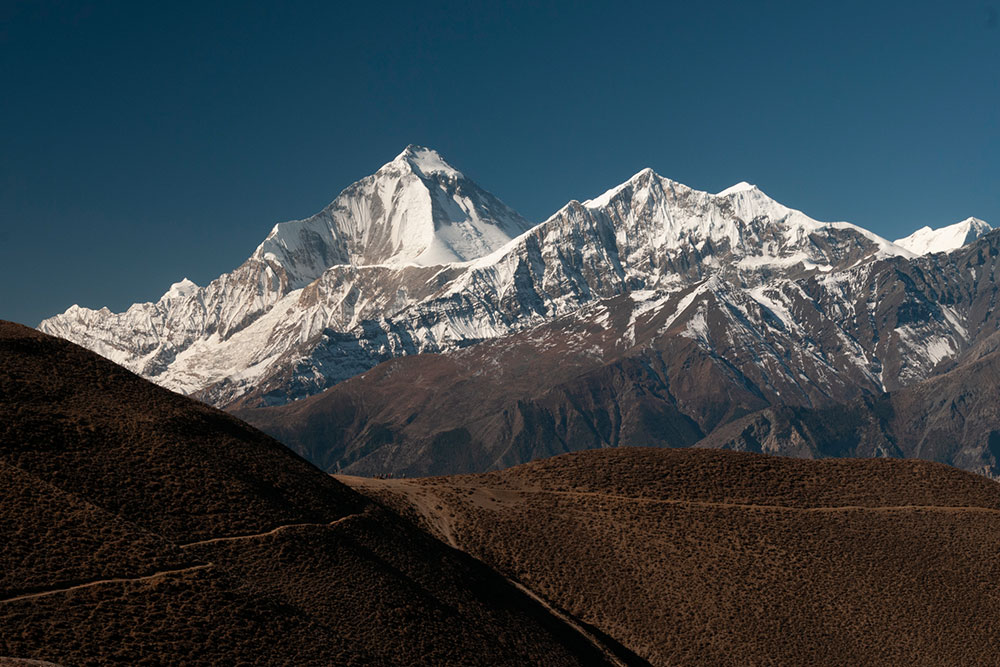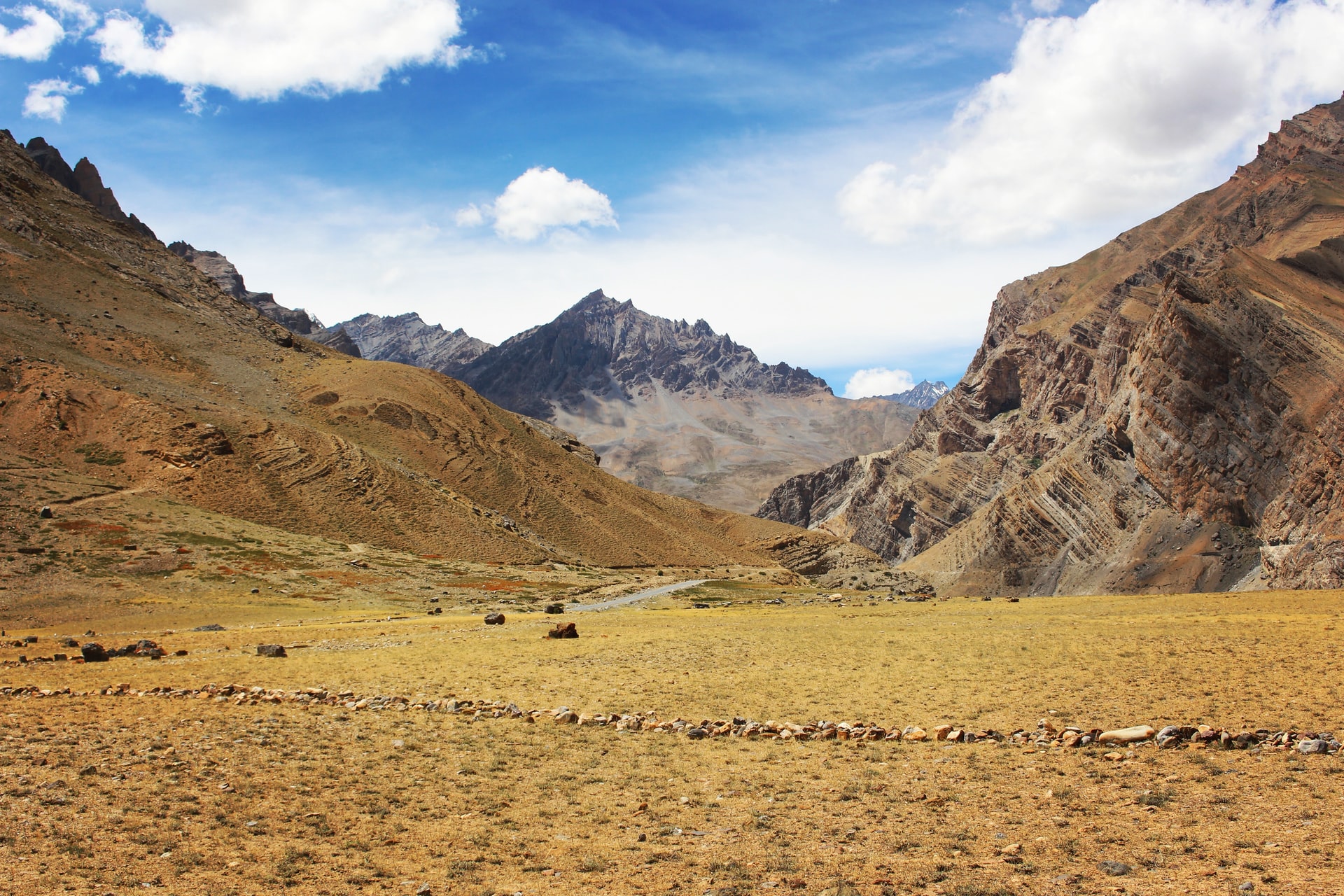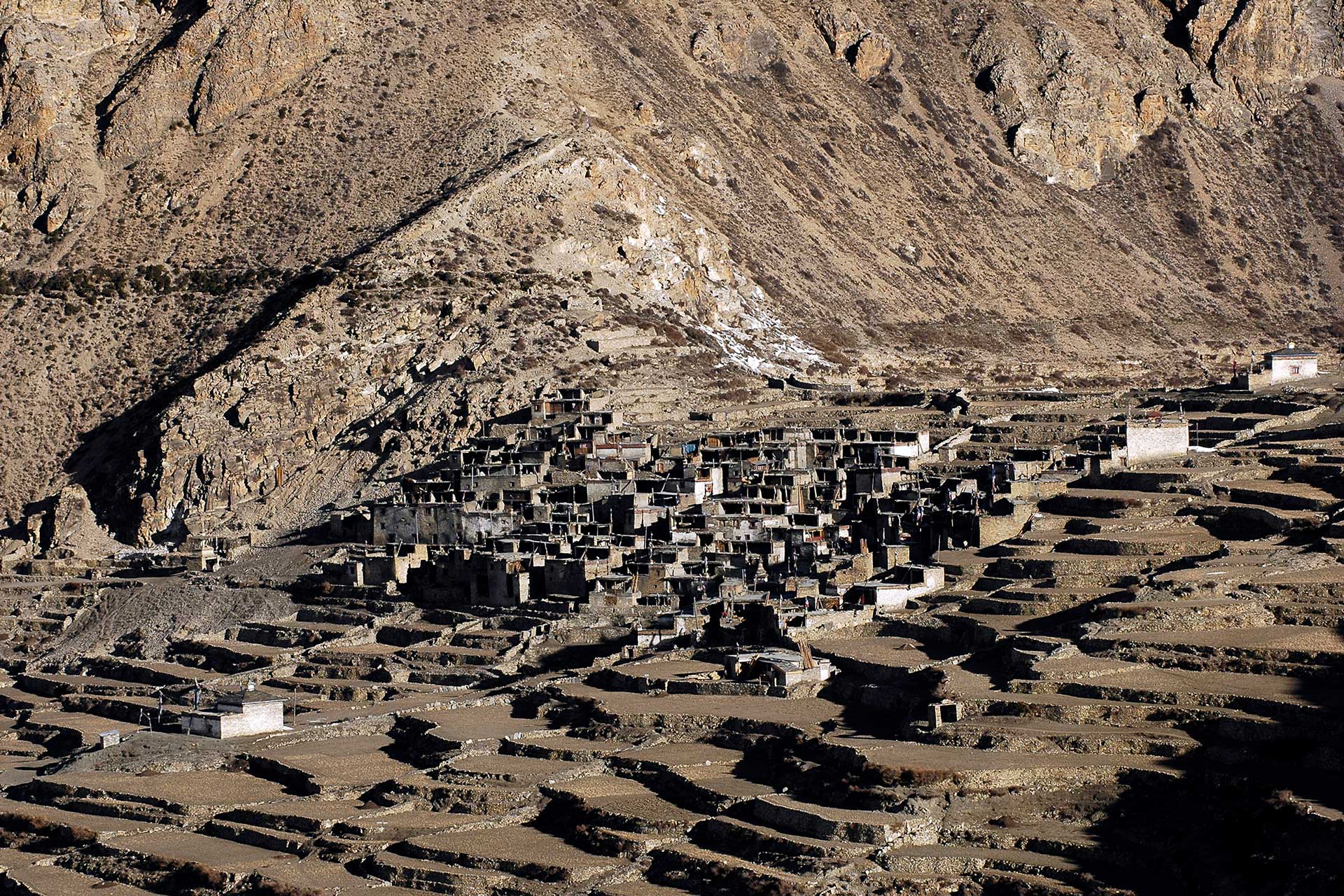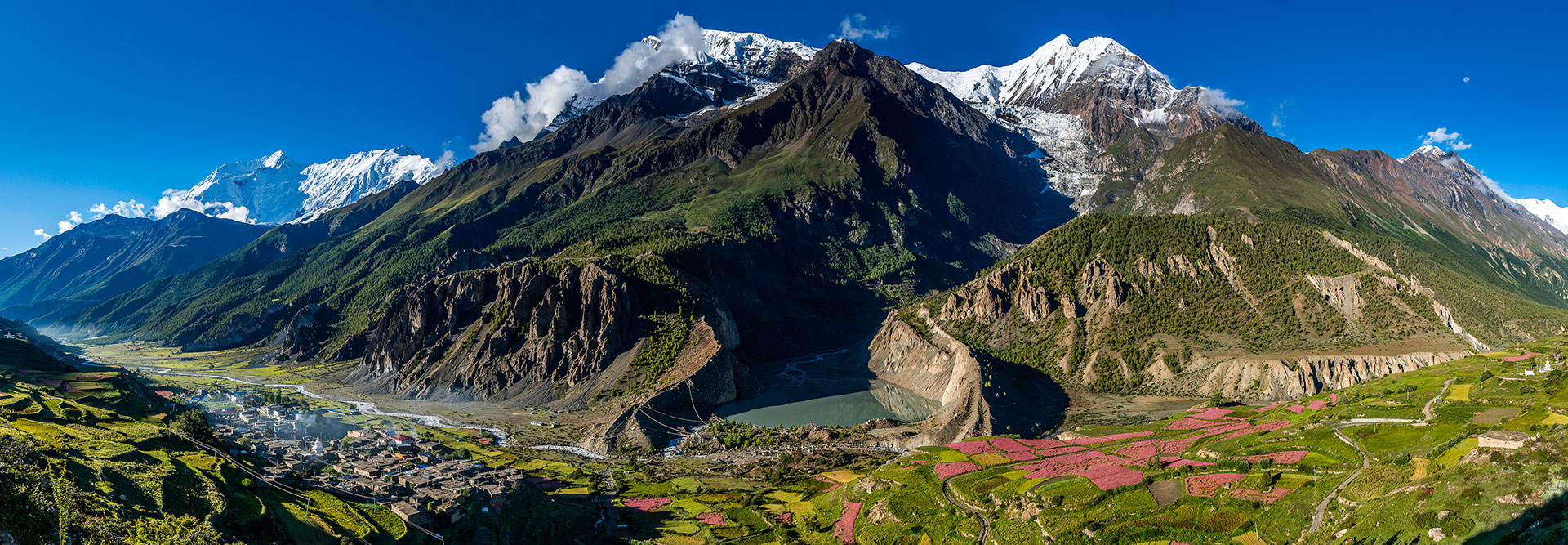Annapurna Circuit & Thorang La Pass Trek
Enquiry For - Annapurna Circuit & Thorang La Pass Trek
Thorang La pass is one of the highest mountain passes in the world. It includes the experiences of multiple weather conditions including warm and cold. From the low valley river to the high alpine environment is experienced. The reasons for trekking at a lower altitude and not driving straight up to higher altitudes are to acclimatize, to enjoy the natural beauty, and to support the local communities. As we plan the trek, we try as much as possible to avoid the vehicular road.
Trek begins in Jagat with curving trails along with the River Marsyangdi to Dharapani. It is the northern lap of Annapurna. The higher we trek, the more the mountains open. Trek past the farming village of Ghyaru, Ngawal, and several Buddhist settlements and monasteries. Trek through the thick forest full of rhododendron and village rice fields is rewarding. Visit villages, walk through the farmland and monasteries on the way to Braga, and then to Manang to prepare for the crossing of the high mountain pass. Descend from the Thorang La pass to Muktinath Temple. Visit the pilgrim of Muktinath worshipped both for Hindus and Buddhist.
Arrival in Kathmandu Airport and welcomed by a guide at the airport. Transfer to the hotel where the guide would brief the trekking program. You may have some time, depending upon your time of arrival, to explore areas near to the hotel.
Set off after an early breakfast for a scenic drive westwards. During the drive through numerous villages and rice fields and we often see mountains on the way. Reach Besi Shahar in 6 hours. The road after Besi Shahar is graveled and not blacktopped. Drive to Jagat Village in the Marsyangdi Valley. Stay in Jagat.
By trekking around the trails of Annapurna massif is the beginning of our trek. Trek after Jagat is easy to Chamje. A bit of descending trek to cross a suspension river bridge over the Marsyangdi River. The easy ascent up to the village of Tal to enter the Buddhist region. During the trek, We would notice the change in the climate and lifestyles of different ethnic groups.
The reasons for trekking at a lower altitude and not driving straight up to higher altitudes are to acclimatize, to enjoy the natural beauty, and to support the local communities.
Gentle trek to reach Dharapani in a couple of hours. Stay overnight in Dharapani Village. Entry to Annapurna Conservation Area officially with a checkpoint for trekking permits and to record the movement of the trekkers.
Walk to the interesting Buddhist village of Bagar Chhap. We begin to see Annapurna II. We will be able to visit a village monastery and see Mani walls (prayer wheels), chhorten up to Bagar Chhap. After Danaque, we climb up through the forest to reach to Timang. It is a nice settlement to see the grandeur of the Manaslu peak. After lunch, we trek along the road to Chame via Kodo. Another famous trail of Nar and Phu treks begins from Kodo.
With shops, banks, and schools, it is the administrative center of the region. We can see a very good view of the mountains from there. Stay in Chame.
The day begins with an easy trek to the village of Bhratang. It has a big apple farm where we stop for a hot tea, apple juice, and an apple pie. We reach a large valley of Dhukur Pokhari. It is a more open valley. Trek ascends through a pine forest trail to the village of Upper Pisang just below the Pisang Peak (6,091 m). The village looks like a good Tibetan village. In the evening, we visit a monastery on the top. A very good view of Mt. Annapurna II is seen from the village.
An easy trek for an hour to begin before we cross a suspension bridge. Steep and zigzag uphill trek to the village of Ghyaru for a drink and a spectacular view of many mountains is seen. Easy walk up to Ngawal Village. After lunch, descend for a half an hour and trek to Braga Village. Visit Braga Monastery then trek to Manang Village.
A day of rest with options visit to Ice Lake, visit Milarepa Cave, or easy hiking for acclimatization.
An easy trek up to the last village of Khansar. It is a small village with Tibetan culture. Gentle ascent in alpine vegetation to reach Sri Kharka in a couple of hours. Sri Kharka is a settlement of lodges. We can see Gangapurna, Tilicho, Pisang, Glacier Dome and other mountain peaks from the place.
An easy trek for an hour. Trek in a rugged trail is challenging. We need to be careful due to stone falls and sandy wind for an hour. Gentle trek further to Tilicho Base Camp. We stay in a lodge.
Gradually ascend to start in the early morning to reach Tilicho Lake. Famous lake…..It is a windy place. It is a place to see the mountains Dhaulagiri II, Tilicho, Khangsarkang, Gangapurna, Annapurna II, Ngadi Chuli, Manaslu, and Kangaru mountains.
Return the same way to Tilicho Base Camp. After lunch, the same way back to Sri Kharka and night-stay there.
Trek left for a little ascent to cross a river to reach Yak Kharka in three hours. Gentle ascend to Letdar. We need to walk carefully keeping distance in a group due to the chances of stone fall from the mountains to reach the Phedi. Phedi has a few lodges. We need to be very careful due to the high altitude. We need to prepare for a tough trek tomorrow and better prepare us high altitude crossing to come. Overnight stay in Phedi.
Start a little early after breakfast. It is a day of steep ascent to moderate ascend on the well-defined trail. After 3 to 4 hours of trekking, we reach to the top of the pass of Thorang La. We can see the Thorang Peak and other mountains all around. It is a photo point and lots of prayer flags at the top of the pass and the highest point of the trek. A descent through the rugged slope with zigzag trails takes us to Muktinath.
Visit Muktinath temple, one of the highest temples in the world. It is a popular pilgrim for Hindus and Buddhist. Stay in Muktinath.
Trek to Lubra village. Bon Po monastery visit. The trail beside the Lubra Khola for a couple of hours. A good view of Nilgiri, Dhaulagiri, and Kali Gandaki can be seen during the trek. After lunch in Lubra, trek for a half an hour to the main road. Drive to Jomsom on a jeep. Stay in Jomsom. Jomsom is the administrative headquarter of the area.
A dinner is planned to celebrate the trekking success with your team and to thank all members of the trekking team. You may offer to leave the trekking gears you don’t need to your trekking team. It may be a generous gesture to those who cannot afford such gears.
Fly to Pokhara. Mountain flight and weather depending and wind flow.
Free time in Pokhara with possibilities of boat ride, sightseeing, or stroll around the lake city. The places to visit in Pokhara are: World Peace Pagoda, Devi’s Waterfall, Mountain Museum, Fewa Lake, Begnas Lake, and a few caves. You may choose: World Peace Pagoda and Fewa lake (for a half day tour) and World Peace Pagoda, Mountain Museum and Fewa lake (for a full day tour).
Transfer to the airport to fly back to Kathmandu and transfer to the hotel. Options for sightseeing to World Heritage Sites/ayurvedic massage or rest in Kathmandu.
Kathmandu Valley has, perhaps, the densest concentration of UNESCO World Heritage Sites. Seven UNESCO WHS of Bhaktapur Durbar Square, Boudhha, Pashupati, Patan Durbar Square, Swoyambhu, Kathmandu Durbar Square and Changu Narayan Temple are framed within 400 sq km. For a full day tour exploring three UNESCO WHS are comfortably possible. For example, you may choose Bhaktapur Durbar Square (a medieval city square), Pashupati (the holiest Hindu temple) and Bouddha (a Buddhist stupa) for a smart mix of culture and architecture with two major religious (Buddhism and Hinduism) sites of Nepal.
Transfer to the airport in time to secure a flight back home
Let our experts guide you to your perfect Holiday.
+977-1-4531445
